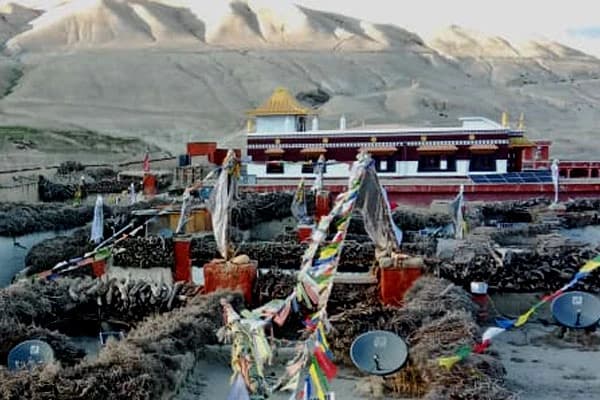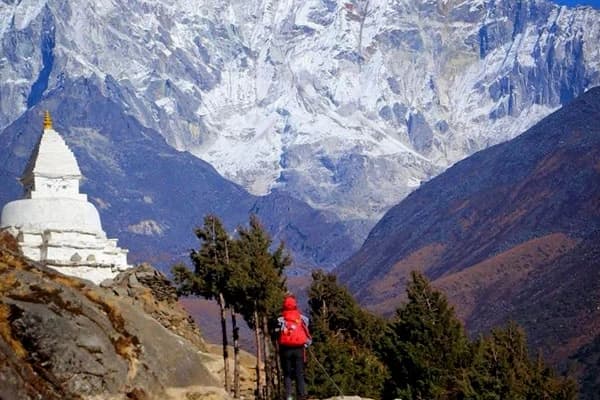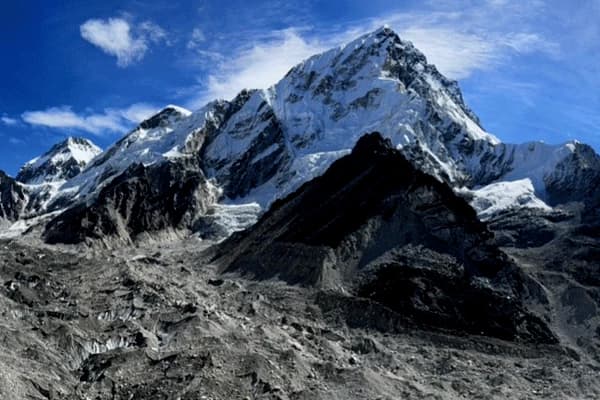Nepal is one of the multicultural, multilingual and multi religious country where individuals tend to follow their own culture and traditions that are inherited by their generation to generation. In Nepal, there are many festivals that are celebrated by the people according to their caste and religions such as Tihar, Holi, Christmas, Eid, Lhoshar etc. Dashain festival which is known as Vijaya Dashami is the longest and biggest festival celebrated by Nepalese people which lies on the month of September-October mostly where family gather together at a certain place and celebrate it by putting Tika and Jamara by elder parents and grants blessings for happiness, prosperity and good fortune. It is said that the blessings of elder ones at this particular day never goes waste as elder parents are considered as a god in our culture. On the other days, family tends to celebrate by playing cards for fun, buying new clothes to family members and consuming delightful meats and other Nepalese delicacy.
Dashain Festival in Nepal
Dashain Festival in Nepal: A Grand Celebration of Culture, Tradition, and Unity
Nepal, a small yet culturally rich country nestled in the lap of the Himalayas, is known for its vibrant diversity. It is home to people of various ethnic backgrounds, religions, and languages, making it a multicultural, multilingual, and multi-religious nation. One of the most remarkable aspects of Nepalese society is its deep-rooted tradition of celebrating festivals that reflect the unique identities of its people. Among the numerous festivals celebrated throughout the year, Dashain—also known as Vijaya Dashami—stands out as the largest and most significant festival in Nepal.
Dashain is more than just a religious occasion. It is a time for family reunions, cultural rituals, delicious food, and nationwide joy. The festival typically falls between late September and mid-October, depending on the lunar calendar. Spanning 15 days, Dashain brings together families and communities across Nepal, strengthening social bonds and reinforcing cultural values.
Why Is Dashain Celebrated?
The Dashain festival symbolizes the victory of good over evil. It is deeply rooted in Hindu mythology, particularly the tale of Goddess Durga and her battle against the powerful demon Mahishasura. According to ancient scriptures, Mahishasura was a demon who terrorized the gods and created chaos in the celestial world. In response to this threat, the gods combined their powers to create Goddess Durga, a divine warrior with unmatched strength and courage.
Durga fought Mahishasura for ten consecutive days, finally defeating him on the tenth day—marking the triumph of good over evil. This day is celebrated as Vijaya Dashami. The word Vijaya means victory, and Dashami refers to the tenth day. Thus, Dashain honors the divine power of Durga and reminds people that truth, virtue, and righteousness will always prevail over darkness and evil.
The first nine days of Dashain, known as Navaratri, are dedicated to worshiping the nine forms of Goddess Durga. Each day signifies a different aspect of the goddess’s power and her contributions to the eventual victory. Families perform pujas (worship rituals), offer prayers, and decorate their homes with flowers and sacred symbols.
Who Celebrates Dashain in Nepal?
While Dashain is primarily a Hindu festival, it is celebrated with great enthusiasm by people across Nepal, including those from Buddhist, Kirat, and even non-religious communities, who partake in the cultural aspects of the festival. The Hindu population, which forms the majority in Nepal, celebrates Dashain with deep spiritual devotion and joy. However, Dashain has become more than a religious event—it is a national celebration that represents unity, cultural heritage, and mutual respect among diverse communities.
Dashain holds a special place in every Nepalese household, regardless of economic or social background. It is a time when family members living in different parts of the country—or even abroad—return home to be with their loved ones. The festival encourages togetherness, harmony, and the strengthening of family bonds.
Cultural Practices and Traditions During Dashain
One of the most cherished moments of Dashain is the Tika and Jamara ceremony, which takes place on the tenth day (Vijaya Dashami). On this day, younger members of the family receive Tika—a mixture of red vermillion, rice, and yogurt—applied to their forehead by their elders. They also receive Jamara, which is yellow-colored barley shoots grown during the first nine days of Dashain. These offerings are symbolic of blessings, prosperity, and protection.
Elders give their blessings for a happy, healthy, and successful life, and often also offer Dakshina (money gifts) as a token of goodwill. In Nepalese culture, the blessings received on Vijaya Dashami are believed to be extremely powerful, as parents and grandparents are considered living gods whose good wishes hold immense spiritual value.
In addition to the religious rituals, people engage in various festive activities. Playing cards, flying kites, and buying new clothes are common ways families enjoy the holiday. Special Nepalese dishes, especially meat delicacies, are prepared and shared among family members. Goat meat, duck curry, sel roti (a rice-flour doughnut), and yomari are just a few examples of popular Dashain delicacies.
Dashain Holidays in Nepal
Dashain is one of the few occasions in Nepal that comes with an extended holiday period. The government usually provides around seven days of public holidays, but schools and colleges often grant up to a month of vacation, combining it with the Tihar festival, which follows shortly after Dashain.
For government employees and corporate workers, Dashain is a much-anticipated time to take a break from busy work schedules and spend quality time with family. The long holiday also allows people from remote villages or abroad to travel back home, sometimes crossing great distances to reunite with their loved ones.
Tourism During Dashain: A Cultural Opportunity for Travelers
Dashain is also a unique time for tourism in Nepal, especially for those interested in cultural exploration. While the popular trekking routes like Everest Base Camp and Annapurna Circuit continue to attract adventure lovers, Dashain opens a different door to travelers: a chance to experience Nepal’s authentic traditions and vibrant festivals.
During Dashain, the cities and villages are beautifully decorated with colorful flowers, lights, and traditional items. The roads are often less congested, as many people leave the cities to visit their hometowns, offering a quieter and more peaceful environment for tourists. This calm atmosphere, combined with festive energy, provides a unique blend of serenity and cultural richness.
Travelers who visit during Dashain can witness various rituals in temples, observe family gatherings, taste traditional foods, and even receive Tika and blessings from local families if invited. The warm hospitality of Nepalese people during festivals is something tourists often cherish long after their trip is over.
Many tourists also plan their trips in a way that they can witness both Dashain and Tihar, another major Hindu festival celebrated shortly afterward. Together, these festivals offer a complete cultural immersion, revealing the spiritual depth and joyful spirit of Nepal.
Conclusion: Dashain as a Symbol of Unity and Heritage
Dashain is not just a religious festival—it is a celebration of life, love, and shared heritage. It brings people together, fosters community spirit, and reminds everyone of the importance of family and tradition. For Nepalese people, Dashain is a time to honor the past, celebrate the present, and hope for a brighter future.
For visitors, experiencing Dashain is a once-in-a-lifetime opportunity to understand Nepal beyond its mountains. It opens the door to Nepal’s soul—its people, beliefs, and rich cultural fabric. Whether you are a local celebrating with family or a traveler seeking meaningful cultural experiences, Dashain promises joy, blessings, and unforgettable memories.




